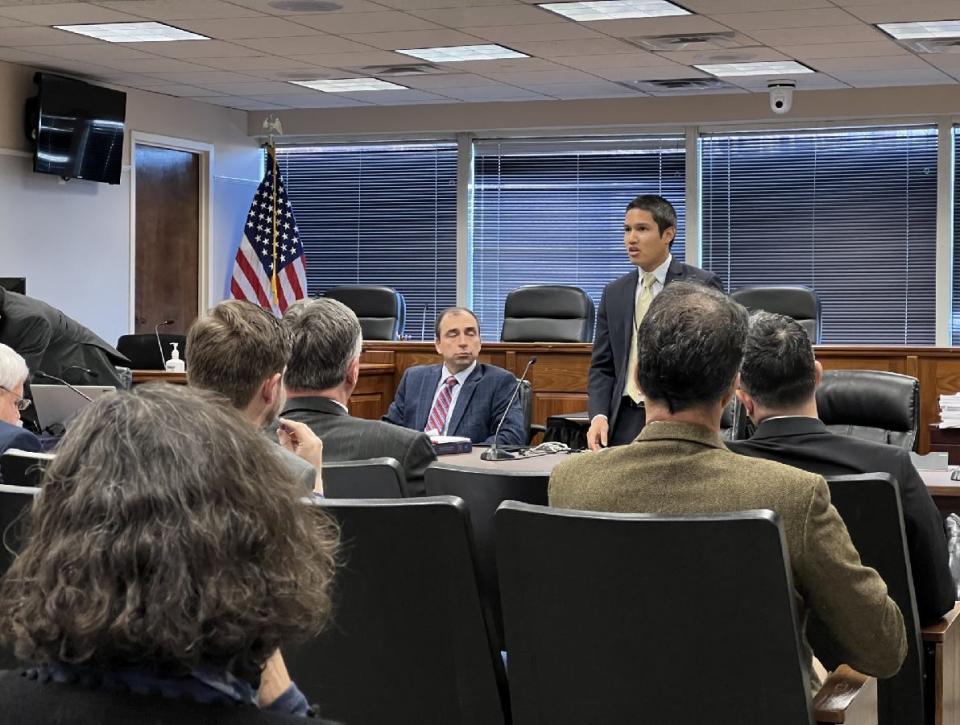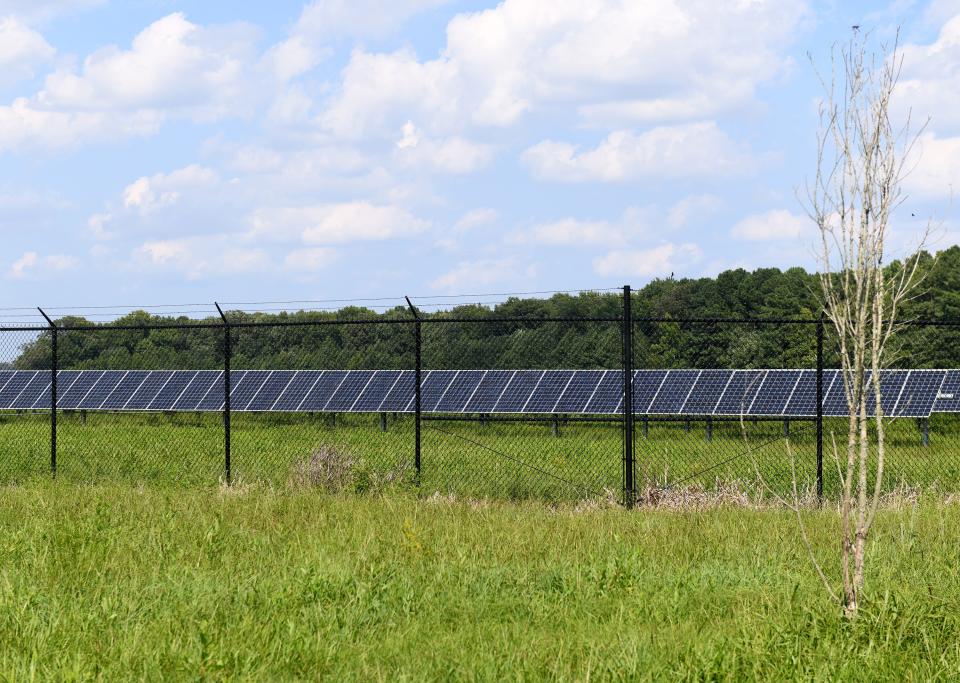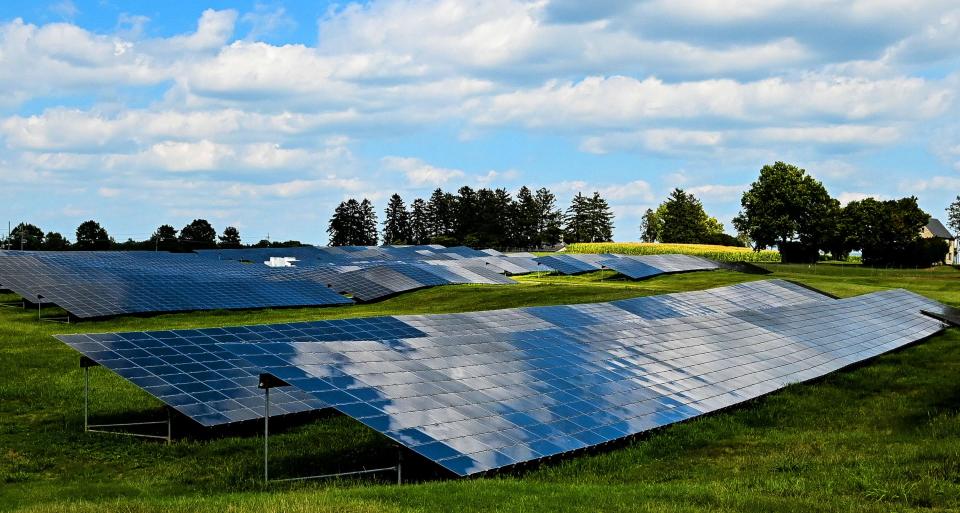‘The farmers own the land’: State commission seeks a new strategy for solar development
For five decades, Martin Brubaker worked in local government, but it was only after he stepped away from city council that he dealt with two new processes: farmland nearby lying fallow for the first time and those of the Maryland entity that manages the state’s solar development.
He described the roughly 60 once-agricultural acres, which are slated for solar development, nearby his Washington County residence and the site on the scenic corridor with a direct line of sight from the Appalachian Trail, after he expressed his view of the governmental procedures, the effects of which came close to home.
“I was very disappointed in the process,” said Brubaker, a retired community planner and budget manager in Montgomery County, who served for a decade on the Hagerstown City Council before not seeking reelection in 2016. “I found the Public Service Commission process very frustrating.”
As state law requires an increased amount of renewable energy, solar developers are seeking agricultural land to help meet the goal. Some rural counties are reluctant to see the ag land ceded, especially when it conflicts with their local jurisdictions’ planning. And the Maryland Public Service Commission that signs off on the large-scale solar projects has had procedures left over from the days of coal, where several larger power plants could meet the state’s needs, creating a 21st century crossroads for the organization created in 1910 to regulate utilities like rail.
Like a connection line that Brubaker claims is lacking between the nearby proposed site and the public grid, critics claim the governor-appointed commission has not always received the public’s input well on projects. A Dec. 15 meeting was held at the headquarters in Baltimore to hear potential fixes for the process, and Brubaker drove all the way from Western Maryland to make his voice heard. And he wasn’t alone.
‘We don’t like your rules …’
Jesse Drewer, planning director for Somerset County, came all the way from the state’s southernmost jurisdiction, a roughly two-and-a-half-hour drive, to make his voice heard. He was one of about 20 individuals or entities that submitted written comments in advance of the conference. His remarks were among those from less than a third of the state’s counties, which individually made a submission.
“Aggressive preemption and the solar developer’s outright hostility toward local authorities has led to the present tensions,” said Michael Sanderson, executive director of the Maryland Association of Counties, in his written remarks.

With developers among the 30 or so in attendance in the Baltimore hearing room, Drewer, too, expressed that sentiment and put what he heard from someone looking to situate solar in a Somerset County residential zoning area in the past few months.
“We don’t like your rules,” he recounted a developer saying, “we’re just going to go above you.”
More: State’s solar power increases by the day. Which Maryland counties lead the way?
The Public Service Commission, which used to work with just a few large utilities to situate coal power plants within Maryland to meet the state’s energy needs, now faces more energy producers as the state shifts more towards renewables. The five-member body, not the local counties, continues to have the final say on energy projects through a process known by its acronym, CPCN (certificate of public convenience and necessity).
John Lennon Miller, director of development for Chaberton Energy, a Montgomery County-based solar developer with four applications in the CPCN process, spoke about engagement with the counties and locals before starting a project.
“At what point have we done enough?” he said, "I don’t want to be expected to show up at everyone’s door 10 times."
Another developer, speaking for himself and his industry counterparts during the four-hour meeting, put the situation this way: “We, as developers, are really caught between counties that don’t want to engage, counties that really want to keep us out and the Public Service Commission, which gives us this tool that without it we wouldn’t be able to move projects forward.”
Thousands of acres of state's farmland could be used for solar installations
But move forward Marylanders must if the state is to meet its own energy goals, which were created to reduce greenhouse gases and curb climate-related crises. The Climate Solutions Now Act of 2022, for instance, called for cutting greenhouse gas emissions 60% from 2006 levels by 2031.
Rachel Jones, director of government relations at the Maryland Department of Agriculture, put forth projections from her department and the Maryland Energy Administration, which came from a legislatively-created Solar Task Force about how much farmland would be needed for the goals to be met.
More: Energy policy and the Maryland General Assembly: Where we are now and what's coming
The projections she said were based off two different models: a 60/40 model (where 60% of the needed, necessary new solar would be ground mounted and 40% would be rooftop or on other non-impervious surfaces) and an 80/20 model (where 80% of the necessary solar would need to be ground mounted).
For the 60/40 model, Jones said, “The current projections are that that would require 17,000 new acres of solar installation and out of that 17,000, it is projected that about 10,000 of that would need to be on (agricultural) land.”
For the 80/20 model, she said: “The current projected numbers are 23,000 acres of new solar, and out of that about 13,000 of that would need to be on (agricultural) land, but we’ve seen projections as high as 18,000.”
In 2022, Maryland had about 2 million acres of farmland. With the highest projections Jones cited, the total percentage of farmland that could be lost to solar, statewide, is less than one percent. But that same year (2022), some 12,400 Maryland farms averaged 161 acres each and 2017 data from the Census Bureau showed 96% of farms in the state are family owned, creating a circumstance where some the state’s nearly 6,000 farmers are indispensable to the solar energy goals.
Delmarva business news: A new brewery is hitting Berlin, Squeaky's original spot now closed | What's Going There
“To meet the goals, you need the land, and the farmers own the land,” said Jones, a former state delegate representing Calvert and Prince George’s counties, in the Southern part of the state. “We need their buy-in in order to meet the goals.”
“Some (agricultural) land will need to be converted to solar,” she told the staff of the Public Service Commission during the conference, “but you’re actually going to need farmers to buy into that.”
‘Fit that in between a set of panels’
On the Eastern Shore, Queen Anne’s County government officials started planning for this future with solar years ago, according to Republican County Commissioner Jim Moran.
In 2017, he said the county calculated, “our fair share, if you were to divide it up among all the counties, is 2,200 acres of solar.” The county mapped out a zone for solar development around the local transmission line to meet that mark.
In 2023, Moran expressed concern that the goalposts may be moving, and his county and the eight other Shore counties could be called upon to do more than its fair share.

“We’re hearing a lot of coming out about 5 to 7 percent of the land on the Eastern Shore, tillable land, is going to be used for solar energy,” he said. “We’re willing to do our part, but when do you say enough is enough?”
A Queen Anne’s County planner who came to Baltimore with Moran discussed some difficulties of solar installations coexisting with the grain operations in that locale. He told the conference about a farm tool called a sprayer, which he said has a maximum extension of 132 feet.
“Fit that in between a set of panels,” he said.
‘Somehow, it has to be made so it’s perceived as fair’
The seeming disconnect between a rural resident like Brubaker and the urban setting of the public service commission could be heard when the former Hagerstown councilman described the location of the proposed 110-foot solar project “about two ridges over from where I live.”
His remarks, within blocks of Baltimore's Inner Harbor in a downtown 16th floor hearing room for the commission, led by Chair Fred Hoover (coincidentally a Hagerstown native) did not seem to fall on deaf ears, however.
REVIEW: Residents still concerned about proposed solar farm in Chewsville area
“There’s going to be some land that needs to go to this,” said Benjamin Baker, a senior commission advisor, who asked several questions, including of Brubaker, at the conference. “We’re all trying to figure that out.”
“It sounds like there also might be some process improvements, just with the existing things such as notice for the public to get involved, extending deadlines,” he said.
Baker asked the former councilman about potential process improvements such as “bringing the trial process into the county instead of at this building” and making it easier for people to get involved earlier in the process. Brubaker responded affirmatively to both.
“There needs to be a serious public hearing in the jurisdiction,” said Brubaker, in an interview during the conference lunch break, “and the points raised transferable automatically to whatever hearing is held in Baltimore.”

Andrew Eshleman, director of the Washington County division of public works, said in a hallway interview during the break that he drove 90 minutes to represent the county’s interests.
“It’s a priority of the county commissioners,” he said. “We’re all hoping to find balance cause we recognize that the legislation is there that’s driving the development.”
He noted the “local pride” in agriculture, and the importance of the agritourism industry as someone who has been in Washington County 15 years.
More: How agritourism boosts Maryland farmers, through Halloween and beyond
“Each community and county across Maryland is different and unique," he said. "We’re America in miniature, so we do have a lot of historic and cultural resources."
"People take pride in their communities for those things,” said Eshleman, sporting a white shirt and tie beneath a brown jacket with the Washington County government logo as he got ready to leave Baltimore. “You want to hear input from the citizens in the community because they’re the ones that live there.”
Cases in point: a Washington County contractor who came to the state’s largest city for the conference and Brubaker, who told the commission staff, two things as solar projects are expected to proliferate in Maryland---one about the process and one about the siting of the panels throughout the state.
“The public needs to have a shot at it,” he said. “Somehow, it has to be made so it’s perceived as fair.”
Dwight A. Weingarten is an investigative reporter, covering the Maryland State House and state issues. He can be reached at dweingarten@gannett.com or on Twitter at @DwightWeingart2.
This article originally appeared on Salisbury Daily Times: Solar developers seek farmland, so Maryland strives for a balance

